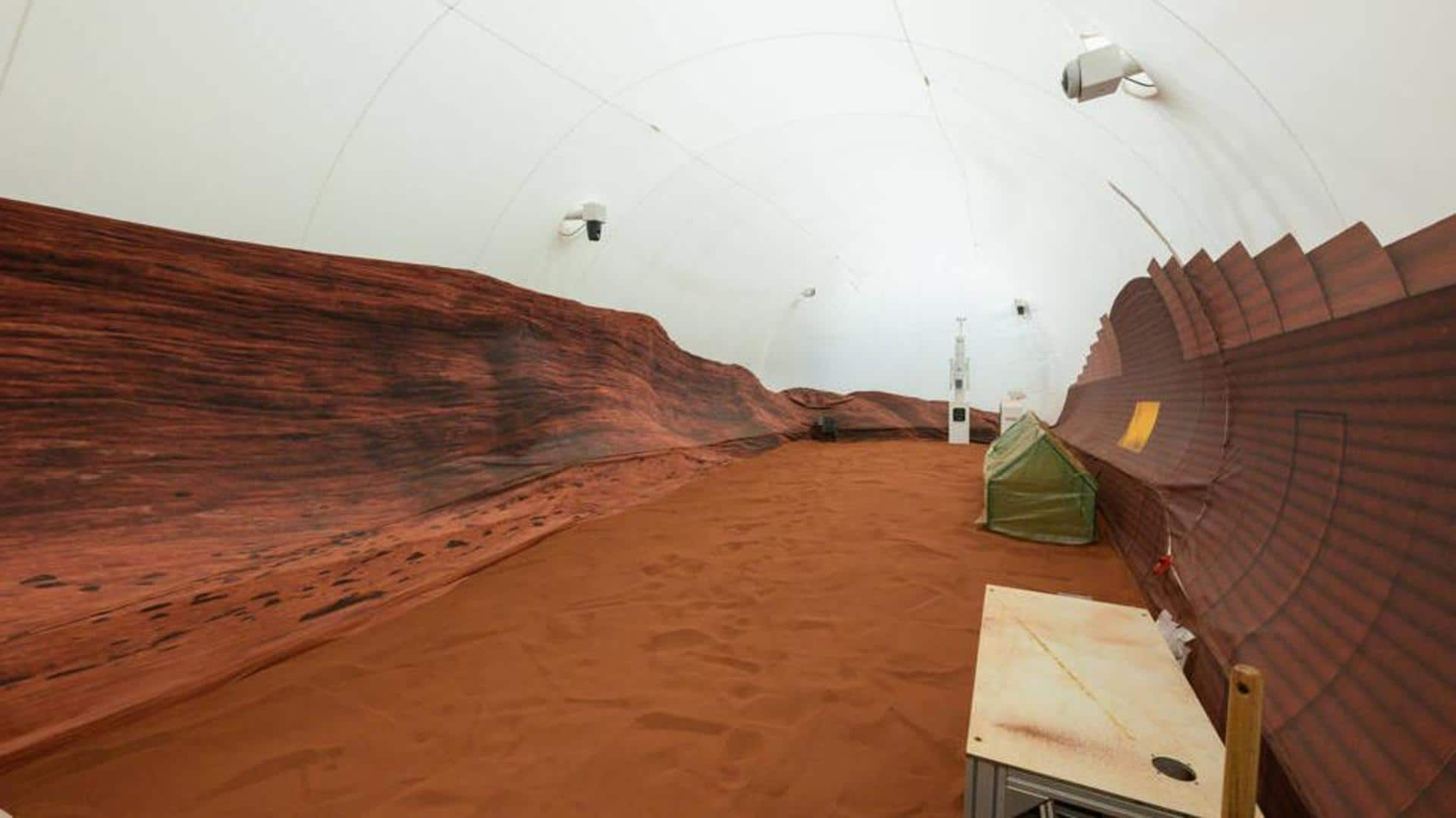
Meet the volunteers of NASA's year-long Mars analog mission
What's the story
NASA recently unveiled its Mars simulation habitat, where volunteers would live for a year to test what life would be like on the Red Planet during future missions. The American space agency has now revealed the volunteers who will be a part of the one-year analog mission. From spacewalks to science activities, here is what the participants would do in the simulated environment.
Context
Why does this story matter?
Even though sending astronauts to Mars may appear to be a long way off, NASA intends to send astronauts to the Red Planet in the future. The experimentation conducted in the simulated Mars environment will be significant for several reasons. For one, researchers will be able to get crucial information about the difficulties encountered on future crewed missions to Mars.
Mission
The simulated Mars habitat has been constructed via 3D printing
The simulated Mars habitat, called "Mars Dune Alpha," spans 1,700-square-foot and has been filled with red sand to simulate the Martian landscape. There are designated areas for "medical, recreation, fitness, work, and crop growth activities, and a technical work area" as well. The habitat includes basic amenities-a kitchen, two bathrooms, and "private crew quarters." Notably, the simulated habitat has been constructed via 3D printing.
Activities
What will volunteers do within the simulated Mars habitat?
The participants will simulate the scenario encountered during future crewed missions to Mars. They will be subjected to realistic stressful situations like resource limitations, equipment failure, and communication delays. They would also have to perform simulated spacewalks, or "Marswalks," grow crops, maintain the habitat, and oversee science activities while also carrying out routine activities like preparing meals, eating, exercising, and sleeping, among others.
Members
There are four crew members on the Mars analog mission
There will be four crew members—two men and two women—on the Mars analog mission. Kelly Haston, a research scientist whose work involves building models of human disease, will serve as the mission's commander. Ross Brockwell, a structural engineer and public works administrator, has been designated the flight engineer. Nathan Jones, an emergency medicine physician, will be the medical officer on the mission.
Crew
There are two backup members as well
Alyssa Shannon, an advanced practice nurse at the University of California, Davis, will hold the position of a science officer. There are two backup crew members for the mission as well. One of them is Trevor Clark, a senior principal engineer in the aerospace and defense industry and the other person is Anca Selariu, a microbiologist in the US Navy.
Analog missions
In total, there will be three Mars analog missions
The simulated Mars habitat, located at the Johnson Space Center in Houston, is created for three planned experiments under NASA's Crew Health and Performance Exploration Analog (CHAPEA) program. The first analog mission will commence in June and the remaining two missions are scheduled for 2025 and 2026. The outcome of CHAPEA will help in planning missions to Mars and other space expeditions.
Official words
CHAPEA could help plan "a successful human mission to Mars"
"The simulation will allow us to collect cognitive and physical performance data to give us more insight into the potential impacts of long-duration missions to Mars on crew health and performance," said Grace Douglas, principal investigator of CHAPEA. "Ultimately, this information will help NASA make informed decisions to design and plan for a successful human mission to Mars."